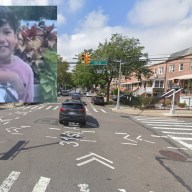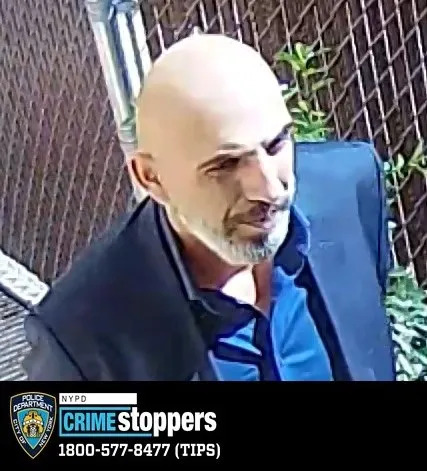By Betsy Scheinbart
Democracy is alive and well in southeast Queens where more than 30 school teachers, district leaders, civic activists and legislative aides have rushed in to fill the void when the new term limit law removes the area’s three city council members Jan. 1.
But some political observers contend that term limits will ultimately do a disservice to the residents of southeast Queens rather than bringing much ballyhooed change as the borough’s veteran politicians are replaced.
Queens will be the only borough to lose its entire city council delegation next year.
Many of this year’s candidates have run for City Council or state Assembly before, but only one has served as an elected official.
The political hopefuls are vying for three council seats, hoping to replace longtime council members Archie Spigner (D-St. Albans), Juanita Watkins (D-Laurelton) and Thomas White (D-South Ozone Park), who cannot seek re-election because of the city’s new law limiting elected officials to two terms.
“The numbers are ridiculous,” Henry McCoy, a southeast Queens Democratic district leader, said about the flood of council candidates. “But the petition process will eliminate a lot of them.”
Candidates must collect a minimum of 900 signatures by midnight July 12 in order to participate in the Sept. 11 Democratic primary. McCoy believes only a handful of candidates will remain in each council race after the petitions are challenged.
State Sen. Malcolm Smith (D-St. Albans), whose district covers much of southeast Queens, sees the large number of candidate as a benefit to the community.
“It is a dream come true for me,” Smith said of the large races. “Politics to me is one of the most important areas that affects our lives, but it often gets a negative stigma. Now, all of the candidates are causing grassroots people to get involved and see the significance politics has in our everyday lives.”
There are now at least 10 candidates in each of the three southeastern Queens races and most are running as Democrats, so the primary will be the deciding factor in most contests. In the three SE Queens council districts, voters registered as Democrats outnumber Republican by more than 10-to-1, according to the Board of Elections.
Even if several candidates in each race survive the petition process to run in the Democratic primary, there will not be any runoffs.
Unlike citywide elections, in which 40 percent of the vote is needed to win, council contests are awarded to the candidate with the most votes, according to Naomi Bernstein, a spokeswoman for the Board of Elections.
In addition to the Democrats, there are two Republican candidates in two different races and a member of the Independence Party, which means no primary will be held on that side of the ledger.
At least 10 candidates, including one Republican, are running for Spigner’s seat, 11 are out for White’s seat and 14, including at least one Republican and one Independent, are trying to replace Watkins.
“It’s good that a lot of people are getting in the process,” McCoy said, “but a lot of these people are running just to run. There are a number of people who don’t have a chance of winning — or even getting on the ballot.”
The controversial term limits law took effect this year after two voter referendums in 1993 and 1996. As a result, Queens will lose all 14 council members, including Speaker Peter Vallone (D-Astoria), which will be a blow to the strength of the Queens delegation.
Professor Robert Parmet, who teaches history at York College in Jamaica, said term limits are “contrary to the democratic process.”
Parmet said he feels a gratitude to those who have served in the Council, including Spigner, who has been in office since 1974 and has helped York in many ways.
“Term limits is a political device to remove longstanding Democrats,” Parmet said. “I don’t believe it is very much committed to democracy.”
Many of the candidates have had years of experience working for local council members, U.S. representatives, the mayor or the governor, but others have virtually no experience in the political arena.
The candidates for the Council in southeast Queens include two college professors, a male and female district leader representing the same area, an imam, a minister and a former state assemblywoman.
Other candidates include grassroots activists, such as members of area school boards, community boards and civic groups.
With so many candidates attempting to appeal to specific segments of the southeast Queens population, it is difficult to predict how the races will progress after the petitions are filed.
“It has never been this wide open,” McCoy said of the council contests. “Prior to term limits, an outsider never had a change against an incumbent. And if there was no incumbent, the party would choose a candidate. Now there are so many races, it’s hard for the party to control.”
The Queens Democratic Party, headed by Tom Manton, has endorsed candidates for all the Queens council races. The party endorsed Leroy Comrie for the 27th Council District, Anthony Andrews for the 28th Council District and Charlotte Jefferson for the 31st Council District.
The 27th CD covers Jamaica, St. Albans, Hollis, Cambria Heights, Baisley Park, Addisleigh Park, Locust Manor, parts of Queens Village, Rosedale and Springfield Gardens.
The 28th CD covers Jamaica, Rochdale Village and Richmond Hill. The 31st CD covers Laurelton, Rosedale, Far Rockaway, Arverne, Edgemere, Bayswater, parts of Springfield Gardens, Cambria Heights South, and South Ozone Park.
Reach reporter Betsy Scheinbart by e-mail at Timesledger@aol.com or call 229-0300 Ext. 138.

































